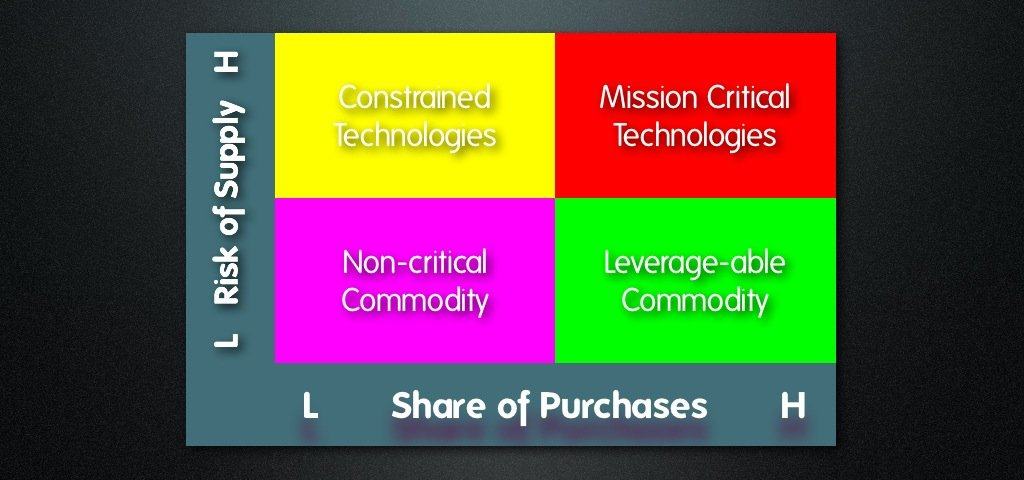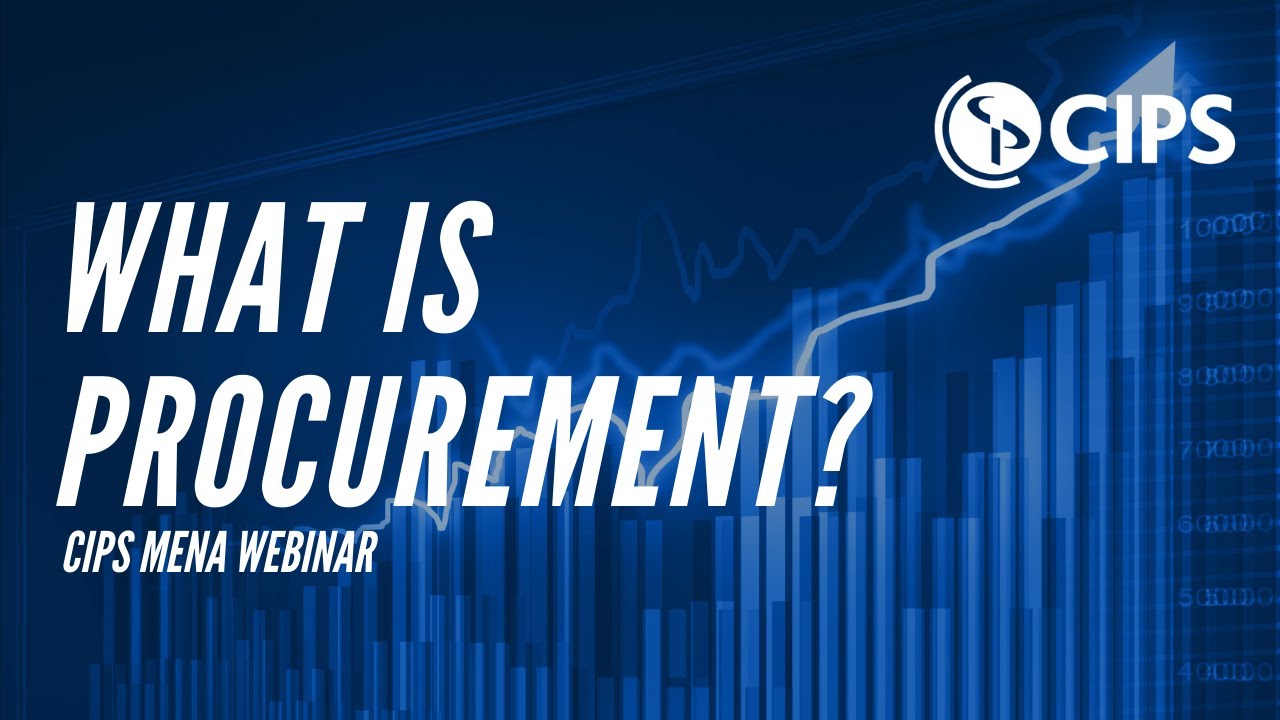“The ability to learn faster than your competitors may be the only sustainable competitive advantage.”
Peter Senge

What To Do To Get That Procurement Improvement?
CEOs are becoming increasingly aware of the procurement function can bring to their business.
Procurement continues to be a very fruitful source for procurement organizations fail to achieve their potential by making one or more of five common missteps.
Companies delivering the greatest value out of procurement each adopt five practices
Excerpt from Introduction to Improving Procurement
CEOs are becoming increasingly aware of the procurement function can bring to their business. And report after report of massive quality and market improvements indicates that such interest is well warranted. Great suppliers can help to drive broad improvements in total costs.
In order to be most effective these organizations are ensuring they have the best talent arrayed against each procurement expenditures, even if they have to outsource some portion of their function.
The leading organizations also recognize that information is more important than organizational structure, thus their technology investments are focused and frequently deliver implementation, unlike many other misguided procurement automation efforts.
Finally, these groups recognize that they are unable to build a competitive business without competitive suppliers, and make every effort to ensure relationships are such that the total system wide cost are being reduced collaboratively, for in so doing, these partnerships can deliver the greatest improvements in procurement.
Go here to read the first part of this series: Introduction
Go here to read the second part of this series: Improving Procurement – Common Missteps
- What To Do To Get That Procurement Improvement?
- Companies delivering the greatest value out of procurement each adopt five practices
- Excerpt from Introduction to Improving Procurement
- What To Do
- Implement Total Cost Analysis
- Segment and tailor approaches
- Procurement Segmentation
- Drive supplier relationships
- Focus on information
- Hire the best (outsource if necessary)
- Conclusion
- A Note on Procurement Scope
- A Note on Procurement Integrity and Ethics
- Frequently Asked Questions
- Helpful Materials
What To Do
Against each of the missteps described earlier, is a vast array of opportunities for procurement improvement, that is to reduce procurement costs, both transactional and item specific. And despite well-intentioned efforts by companies to manage their procurement strategically and to drive automation at reducing transactional costs, still we find significant opportunities for procurement organizations to deliver more to the bottom line.
So what should a company do to ensure that procurement improvement occurs, the procurement function is in fact delivering value, and the promises of investments to reduce costs are valued? Companies that are delivering the greatest value out of their procurement functions each adopt five practices:
- Implement a Total Cost of Ownership (TCO) measure that captures all procurement effects.
- Segment and refocus the organization tailoring approaches to the different requirements, including leveraging transaction-less procurement.
- Drive strategic sourcing with executive involvement, and focus the procurement function on product and process simplification.
- Focus on information rather than structure.
- Attract, develop and retain world-class buyers and professionalize all sourcing functions.
Implement Total Cost Analysis
The ultimate goal of any strategic sourcing initiative should be to determine the mix of products, suppliers, and services that can support internal requirements at the lowest total cost.
Total cost is the sum of invoice price and other off-invoice factors, including quality, delivery, warranty, financing, and other elements that impact what a product will actually cost an organization. For example, a procurement organization might contract for products from an overseas supplier at a significant discount to the current purchase price from domestic suppliers. However, not factored into the equation would be incremental costs incurred for transportation, import clearance and extra inventory required in case of supply disruptions. These additional factors, though not readily apparent, create real incremental costs, which may offset the appealing price savings.
Few companies do a good enough job of tracking their finished product costs appropriately. Current cost systems are designed to spread costs evenly across a broad cross-section of products regardless of cause and effects.
Proponents of Activity Based Costing (ABC) have demonstrated the folly of such a naive methodology. The same could be said for procurement costs, which are likely to receive far less attention than product costs. The problem for procurement though is that unless these costs are tracked and attributed back to the root supplier or material, little improvement could really be experienced in costs. Procurement organizations would literally be driving their improvement programs blindly. Take for example the wool felt manufacturer that discovered by paying a 20 percent premium for higher grade wool, fewer needles would be broken in the process, machine uptime would increase, and quality product output would increase by far more than the price increase. Or the window manufacturer that discovered higher-grade lumber would produce more useful long pieces, requiring less splicing and would produce more useful window frames than the price premium.
IT buyers have been hearing the term “Total Cost of Ownership” (TCO) used in product pitches for some time now. Simply put, TCO is the present value of all costs associated with product, service or capital equipment that are incurred over its expected life. And it is used primarily in helping make decisions when the purchase price is only one of many other costs that can significantly change the decision. The value of TCO thinking is that it begins to force organizations to think more broadly about the choices of suppliers, materials, or technologies than just the price paid.
The value of TCO thinking is that it begins to force organizations to think more broadly about the choices of suppliers, materials, or technologies than just the price paid. Please Click To TweetTake for example the electronics designer who has been trained in the use of application specific integrated circuits (ASIC), which have to be custom designed and made. These ASICs have a large design and testing cycle, and require significant up-front non-recurring engineering charges. But in some cases a programmable device made by companies like Altera or Xilinx can replace an ASIC. These devices require a far shorter design and test cycle, and the functionality can be changed up to the moment the product is manufactured. While the programmable device has no minimum volume requirements, they do have higher variable purchase prices. So if time to market and flexibility is valuable for a large range of low-volume products, the programmable device may be preferred to the ASIC design, despite the higher per unit cost. And if the procurement and design organizations are not measuring all of the costs and weighing these trade-offs appropriately, the business is probably missing a large opportunity.
Understanding the detailed cost elements of a chosen component or supplier helps procurement organizations make more informed decisions about which item or supplier is a better fit strategically, and how to achieve the targeted procurement improvement.
Segment and tailor approaches
“There is nothing so inefficient as making more efficient that which should not be done at all.”
Peter Drucker
Segmentation, though used primarily in marketing organizations for customer grouping, is incredibly important from a procurement perspective because of its value on focusing an organization on the different types of decisions or issues that need to be addressed.
Take the ABC Pareto example described earlier. Suppliers that sell a lot of stuff to a company or items that represent a large value of the total procurement expenditure require a different level of activity than those at the other end of the spectrum.
Where the ABC is misused is in the assumption that lower valued items do not require as much focus as the others. For as we described earlier, the low value items frequently incur significant transactional costs and because they are not managed professionally or strategically incur severe price penalties.
The reality is every segment of suppliers or items no matter how trivial require both strategic and transactional efforts. The level of such effort and the impact on opportunities will depend on the specific business and degree of review previously expended on those segments. If for example, you have never reviewed the lowest 30% (C items) strategically, then you may be missing opportunities to reduce total costs in these products by as much as 50%.
One of the challenges with good segmentation is knowing what to include. Amazingly, few companies think of procurement beyond the most obvious production or service items that have the highest visibility. The reality is that a vast level of expenditure is under- or un-managed. What about copiers, travel, office supplies, temporary help, house keeping or security? Do these come under the purview of procurement, or are they part of an organization with even less training in procurement methodologies? Employee benefits are one of the largest expenses yet are managed wholly within the Human Resources function without real procurement assistance or focus. While these areas may have complications that require them to be managed under other functions, non-traditional procurement represents far too much in expenditures to be given short shrift. These, like other expenditures demand some level of rigor and a tailored approach to the inherent strategic and transactional issues.

Probably the most effective segmentation we use is one that arrays procurement expenditures in categories or items and by suppliers within a four-box grid as shown. The two axes we use are the original ABC Pareto analysis arraying procurement by the value spent, and an assessment of the risk to the business of supply. Expenditures can then be broadly group into four groups or segments requiring similar challenges and procurement focus.
Procurement Segmentation
What should be obvious on perusal of a procurement segmentation framework is that a variety of issues are evident requiring tailored approaches, skills, and systems.
While the layers of strategic effort and the opportunities for reducing total cost or supply risk are different, every segment shares one common requirement – that every item must be procured and therefore requires a similar set of activities or transactions. These activities may range from searching for a supplier, managing several bids, placing an order all the way to receiving the product and eventually paying the supplier upon receipt of an invoice.
For some companies a procurement transaction may cost as mush as $100. And frequently, particularly for non-critical items, the total value of items being purchased in a transaction might be less than the transaction cost itself. Which is why so many organizations, recognizing that large number of transactions cost real money, will drive towards automated solutions precisely to reduce the cost of each transaction. And, in many cases, the systems solutions will reduce those transactional costs. What this solution fails to recognize though is that every transaction requires two parties, the buyer and the seller, on two separate systems, performing a similar set of activities.
The reality is that many companies can achieve far greater savings by implementing transactionless approaches whereby one of the parties is responsible for a single transaction that is valid for both parties. Electronics distributors such as Arrow or Avnet do just this for customers when they implement stores within the factory and replenish production lines. They track the usage of materials and replenish based on the customers’ production schedules. The transaction costs for one party are entirely eliminated. This approach unfortunately is severely underutilized and remains a significant opportunity for total cost reduction.
Drive supplier relationships
We have said earlier that too many companies focus on leverage and miss greater opportunities to reduce cost. That is not to say that supplier negotiation skills are not necessary. Far from it, leading procurement firms negotiate with their suppliers as aggressively as their customers do with them. To do less would be to relinquish your business to a long-term margin squeeze with customer prices shrinking faster than costs. No, negotiations are necessary, but they must be coupled with a more collaborative approach with the supplier, not the traditional adversarial approach.
Both the organization and its suppliers are beneficiaries of the sale of a product or service in which their value or component is utilized. Driving down total costs and increasing total market penetration is advantageous to both parties. For both, the complete supply chain is one seamless whole regardless of corporate boundaries and opportunities to reduce total costs are eagerly embraced.
Both the organization and its suppliers are beneficiaries of the sale of a product or service in which their value or component is utilized. Please Click To TweetBack in 1986 Honda selected Donnelly Corp to build all the mirrors for the cars built in North America. Until then, Donnelly made the interior mirrors, and another supplier provided the exterior mirrors. Donnelly did not even have a factory to build exterior mirrors. Yet Honda had confidence in the alignment of the companies’ goals, culture and values such that they agreed on this partnership and Donnelly built a new plant to make exterior mirrors. A decade later, Donnelly sales to Honda had increased more than twelve-fold.

Product and process design are the primary determinants of cost. Choose to deliver a service in a certain way, or manufacture a product with a certain specification and component, and the cost is cemented with small layers of variability. However, engage and integrate good suppliers in the design and you can reduce total costs significantly and significantly accelerate the time to market.
Product and process design are the primary determinants of cost. Please Click To TweetMichigan State University’s Global Procurement and Supply Chain Benchmarking Initiative found that cross-functional teams involving suppliers drive revenue and profit growth from access to new technologies and process innovations much faster than not.
The reason why integration early in the design process leads to such massive benefits is that product and processes are simplified for both supplier and customer simultaneously. Transactional redundancy can be eliminated, designs can be reused, and components can be rationalized, best practices shared and concurrent engineering can be brought to bear on the problem.
Great supplier relationships don’t just require supplier integration in product and process design, there is far more to it than that.
For one, they are stunningly fact based. This means that procurement teams that want to work effectively with their suppliers have to be astute at Market/Industry Analysis, Target Costing, Cost Sharing/Cost Breakdown, Competitive Assessments/Teardowns, Value Analysis, Activity Based Costing, and Total Cost of Ownership among other skills. And these relationships are not merely between procurement organizations and suppliers selling organizations. They are across the board, from top to bottom.
Strange as it may seem, companies feel slighted when their senior executives are unable to gain access to the most senior customer executives, yet they commit the same behavior in their treatment of their own suppliers. Great supplier relationships require senior executives to become personally involved in the process of cementing a true partnership.
Great supplier relationships require senior executives to become personally involved in the process of cementing a true partnership. Please Click To TweetFocus on information
The perfect supplier provides great service, has very short lead times, always delivers the correct quantity on time, never has a quality problem and does all of this at reasonable prices. The value of a supplier should at the very least factor in performance on each of these six goals, in addition to other strategic dimensions such as capacity or technology investment. But if your company is not measuring these variables or not explicitly making them a part of the total cost equation, then how do you expect to see improvements other than price?

Primarily because of a lack of information, many companies are compelled to drive towards centralization only to find themselves experiencing service and other problems. Should the solution for better procurement be collaboration and coordination or a structural change towards centralization?
Some companies find it easier and faster to make a structural change, but whichever the solution put in place, the fundamental requirement for information does not change. As described before, procurement is a team activity, requiring broad cross-functional involvement and collaboration to be most effective.
Today, procurement functions must depend on a mix of online and offline information sources. Sadly, the lack of integration or basic data collection and analysis seriously inhibits knowledge transfer and collaboration within and across enterprises. Without such fluid information flows and knowledge sharing, a procurement organization is unable to understand its spending patterns and purchase requirements and wont be able to develop the most effective sourcing strategies. Why then are companies struggling to build the requisite data warehouses across their multiple factories and divisions? Unfortunately, while this lack of data integration continues, the results are that procurement teams are forced to start each project from the beginning rather than building on existing learning.
The bullwhip effect has been documented and discussed quite extensively. The effect is demonstrated when small consumer variability is misinterpreted by each participant in a supply chain resulting in significant variability at the end of the chain. The lessons learned upon observation bring to clear focus the impact of poor information quality, in this case distorted by participants in the supply chain, resulting in extra costs due to missed production, inventory pile-ups or lost customers due to stock-outs or improper service.
The challenge of making big, decentralized conglomerates behave more like single companies when it comes to procurement requires a great deal of collaboration and coordination, and as a foundation a credible base of information.
Hire the best (outsource if necessary)
Though systems and information are vital elements of a good procurement improvement effort, they are only necessary to drive more valuable utilization of critical procurement skills. The basic operational mantra of procurement organizations should be to drive non-value added activities out such that the skills of the team could focus on the most fruitful elements of value creation.
From the preceding discussion, it should be clear that procurement organizations, in order to be most effective, require a variety of skills. What is clear is that firms that are delivering the largest short- and long-term benefits are focused on skill building, procurement organizational productivity and strategic focus. These great companies all:
- Hire the best and pay correspondingly
- Diversify their skill base having diverse talent and backgrounds in place
- Provide a management career path
- Promote general management skills rather than years of experience
- Provide significant opportunities for internal and external training
- Create and utilize quantifiable metrics and set tight goals, and
- Promote moves across business units to promote best practice sharing and knowledge transfer
The skills required to build a world-class procurement organization are quite broad and comprehensive. And, it is unlikely that every firm could afford to reach the level of appropriate talent with its own staff. In those cases, it may be in the best interest of some firms to find an outsource solution whereby talent can be shared with other companies, as in constrained procurement described above.
Procurement automation and standardization, and building high quality procurement data warehouses are all actions that make procurement outsourcing (partially or wholly) a reality.
There are two basic rationale for business process outsourcing: first, an organization cannot perform the process competitively, or second, the process does not contribute to an organization ‘s competitive differentiation and could be outsourced to reduce costs or free up resources. Portions of the procurement function could be outsourced, in some companies, and justified under both of these conditions. Strategic procurement can provide an organization a competitive differentiation if performed to excellence. Commodity procurement excellence can save organizations money, but rarely can it provide competitive differentiation, at least for any length of time. Rather, commodity procurement can provide a negative differentiation when it’s performed poorly. It is a process that only gains visibility when there is a problem. Services procurement and management has both strategic and commodity dimensions. So as the question of building the appropriate procurement skills shifts towards outsourcing as a choice, it is becoming increasingly obvious that for some portions of the procurement portfolio of activities, outsourcing is a viable alternative.
Conclusion
Procurement driven performance improvement opportunities are real, they are large and they are capturable. Great procurement functions understand cost, not just price. They are not monolithic, they use a variety of approaches for managing suppliers driven by well thought out segmentation. They understand the value of a supplier and strive to leverage these cherished relationships. They are data-based, analytical and value information. Finally, they recognize the value of creativity and the requisite talent to enable a rich flow of great ideas.
Let’s face it; one way or the other, procurement has the potential to shape the performance of your company. Done poorly, your procurement function could force you to exit otherwise attractive businesses, leave a lot of money on the table, or worse. When performed well, the procurement function adds enormous value to the strategic equation, helping to reshape the economics of your business and the fundamental basis by which your business can compete.
Go here to get a PDF file containing all three part: Improving Procurement PDF
A Note on Procurement Scope
Procurement, Sourcing, Acquisition, and Purchasing have all been used as organizational descriptions that vary widely.
In the commercial sector, The Institute of Supply Management (ISM) defines strategic sourcing as the process of identifying sources that could provide needed products or services for the acquiring organization. The term procurement reflects the entire purchasing process or cycle, not just the tactical components. ISM defines procurement as an organizational function that includes specifications development, value analysis, supplier market research, negotiation, buying activities, contract administration, inventory control, traffic, receiving, and stores. In addition, purchasing refers to the major function of an organization responsible for acquiring required materials, services, and equipment.
In the Defense industry, the term procurement is defined more tactically as buying goods and services for the government. Acquisition is used to describe the conceptualization, initiation, design, development, test, contracting, production, deployment, Logistics Support (LS), modification, and disposal of weapons and other systems, supplies, or services (including construction) to satisfy the Department of Defense needs, intended for use in or in support of military missions. Thus, the acquisition definition is more akin to a combination of strategic sourcing and various other capabilities typically involved in commercial procurement scope.
We are using procurement to broadly include acquisition, strategic sourcing, and tactical sourcing/purchasing for this article.
A Note on Procurement Integrity and Ethics
Corporations and public bodies often define processes intended to promote fair and open competition for their business while minimizing risks such as exposure to fraud and collusion.
In the United States, Federal Acquisition Regulations (FAR) govern the communications between procurement organizations and potential suppliers. These regulations are comprehensive in scope and aim to ensure that all competitors receive equal information and consideration in preparing their bids.
“Government business shall be conducted in a manner above reproach and, except as authorized by statute or regulation, with complete impartiality and with preferential treatment for none. Transactions relating to the expenditure of public funds require the highest degree of public trust and an impeccable standard of conduct.”
Subsection § 3.101-1 of the FAR
Unfortunately, many actions can be taken by procurement teams that can unfairly tilt procurement to corrupt vendors. Therefore, it is paramount to every procurement organization that there are clear rules of engagement and processes that ensure the highest integrity of those involved in the procurement process.
Without a high integrity procurement approach and organization, it is folly to have a conversation about achieving the full potential of procurement benefits.
Frequently Asked Questions
What is procurement?
Procurement is the strategy and process of identifying, selecting, and negotiating terms with external sources and then acquiring goods, services, or works from those sources, typically through a tendering, competitive bidding, or strategic partnering process.
What is the difference between procurement and purchasing?
Purchasing is a subset of procurement and refers to the specific function of an organization responsible for the activity of acquiring any equipment, services, and required materials.
Procurement is the overarching function that establishes the strategy and includes all the activities required to manage the company’s supply of goods and services. These activities include setting all fundamental requirements, market research, vendor evaluation, and other sourcing activities, including contract negotiation and supplier relationship management. Procurement also consists of the purchasing activities required to order and receive goods.
Helpful Materials
Professional Procurement Organizations
- Association for Supply Chain Management (ASCM)
- Chartered Institute of Procurement & Supply (CIPS)
- Institute for Supply Management (ISM)
- International Institute for Procurement and Market Research (IIPMR)
Procurement Professional Certifications
- Certified Procurement Professional (CPP)
- Certified Professional in Supply Management (CPSM)
- Certified Purchasing Manager (CPM)
- Certified Supply Chain Professional (CSCP)
- Supply Chain Management Professional (SCMP)
Exemplary Procurement Regulations
- Standards of Ethical Conduct for Employees of the Executive Branch
- Federal Acquisition Regulations (FAR)
Interesting Video Introduction to Procurement

I really loved reading your blog. It was very well authored and easy to understand. Unlike additional blogs I have read which are really not tht good. I also found your posts very interesting. In fact after reading, I had to go show it to my friend and he enjoyed it as well
I totally agree with you,i like the way you have broken down the topic and explained it in a more understandable version.Thanks for sharing the tips.They are really helpful.
The quality of information provided is very fine and impressive. This is the one of its kind information that most people look for. The tips have been beneficial for my business in may ways and I look forward to read more articles on procurement improvement.
Very impressive content i really admire you overall content structure plus I’ve learn something important key aspect about CEO’s especially I just want to thank you for sharing this article.
Honestly speaking this is by far the best explanation I have ever got on procurement. Thank you very much.
Growing spirited pressures are forcing companies to look at procurement as a means of serving increase the base line. CEOs are looking for areas to cut expenses, and reform procurement processes is a feasible solution.
Amazing post; Just when we thought we knew everything about procurement!
Very good blog you have here but I was curiouus about if you knew of any user discussion forims that cover the same topics talked about in this article?
I’d really love to be a part of community where I can get feedback from other knowledgeable individuals that share the same interest.
There are various supply chain and procurement groups on linkedin.com that are quite good. I would try there first. Best wishes
I am impressed by the quality of information on this website. The article is full of authentic information and I think this tips will really help people perfectly to figure out their business. Thank you for sharing with us.
Tremendous posting, Specially home sales process. Thank you for sharing with us. Personally I like this process.
Hello Leon, This is article really full of authentic information and I think this tips will really help people perfectly to figure out their business. Cordial thanks for your such as good and informative post.
This is great information,I had a good time reading the entire length of the article. Thank you.
I am impressed by the quality of information on this website. There are a lot of good resources here. I am sure I will visit this place again soon
It’s difficult to find educated people for this topic,
but you seem like you know what you’re talking about!
Thanks
I appreciate you sharing this article post.Really looking forward to read more. Awesome.